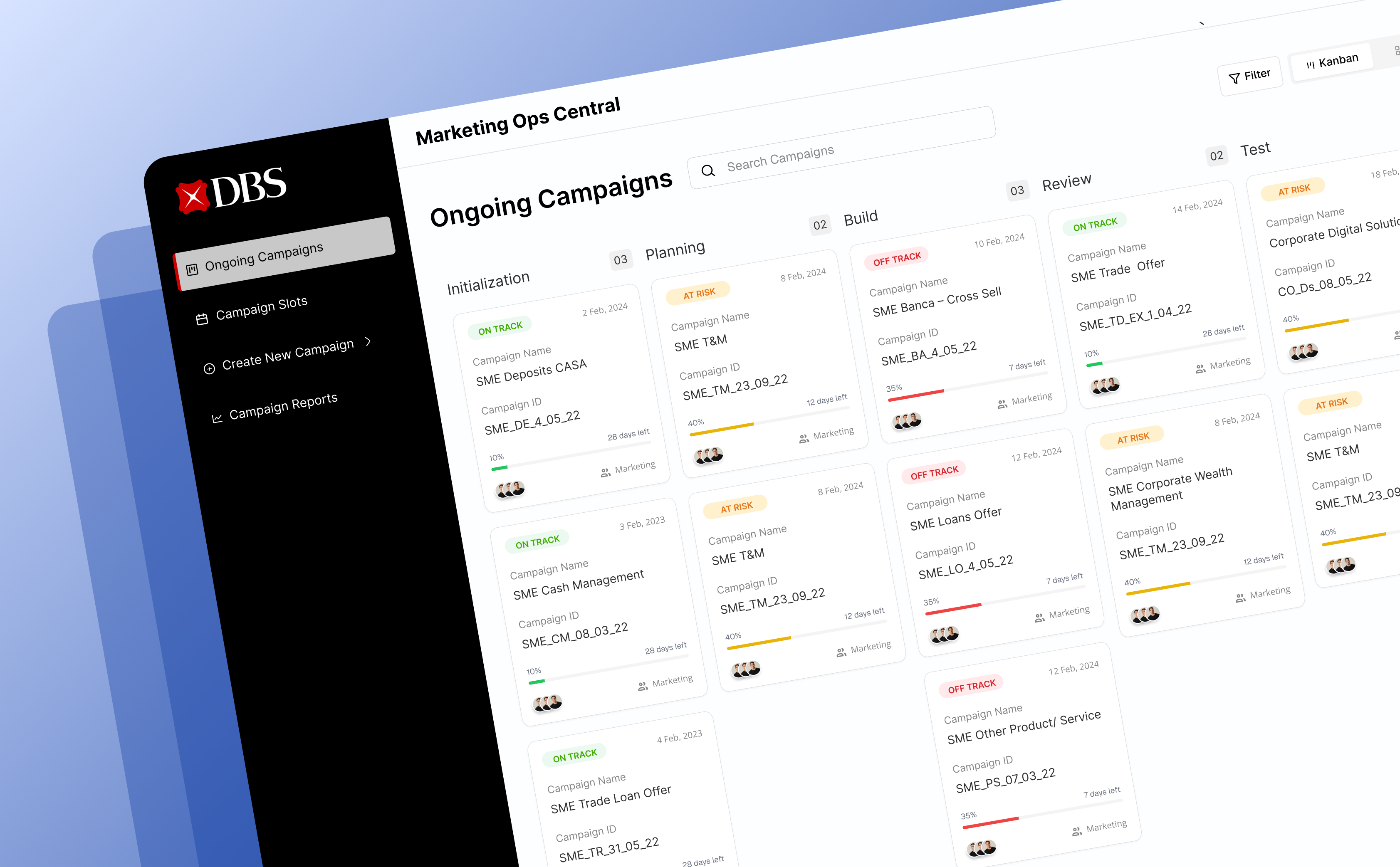
DBS Bank was looking to streamline its internal campaign management process, which spanned multiple teams and relied heavily on manual coordination through emails, spreadsheets, and siloed tools. The goal was to reduce inefficiencies, improve visibility, and bring structure to an increasingly complex workflow.
I worked as the lead designer for the project alongside Shekhar (Designer), Raj (Senior Product Manager), and the engineering team
We spoke to stakeholders across 5 teams to understand how each one contributed to the campaign lifecycle and what stood in their way. We realised that the problem didn't have a very straightforward solution.

Each of the 5 teams contributed to different parts of the workflow, shaped by their specific roles and needs. Since adopting a new platform meant a significant shift in how each team worked, and a previous platform had already failed due to low adoption, we knew we had to introduce change gradually this time.
Suggested Feature: Kanban-style campaign tracker
Suggested Feature: Automated notifications & handoff alerts
Suggested Feature: Modular form broken down in sections
Suggested Feature: Campaign reports section to track launched campaigns
Early in our stakeholder interviews, a recurring theme emerged. No one really knew where a campaign stood at any given moment. Some teams were tracking progress in spreadsheets, others had Slack threads buried somewhere, and a few relied on memory (not ideal when you're juggling multiple launches).
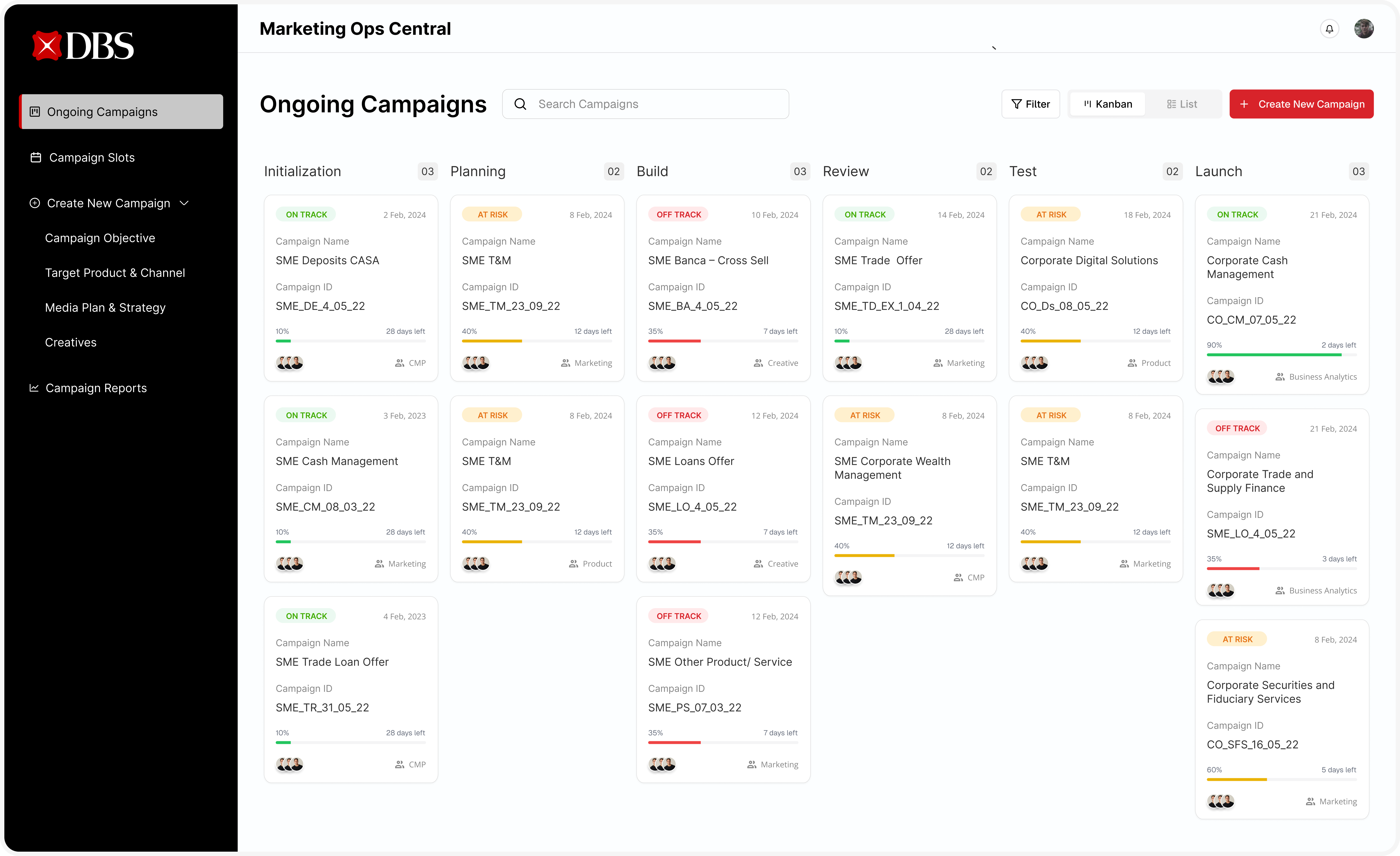
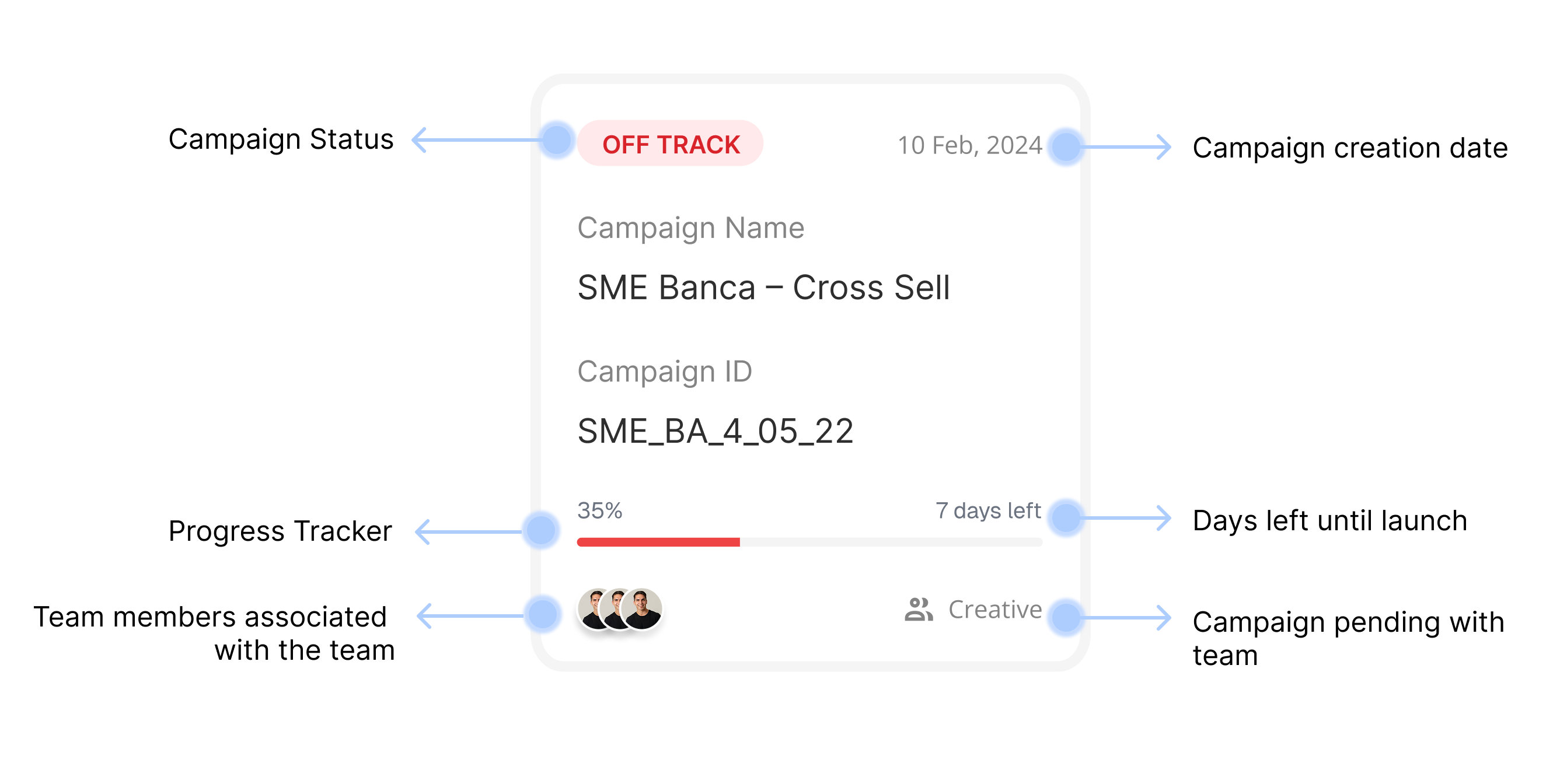
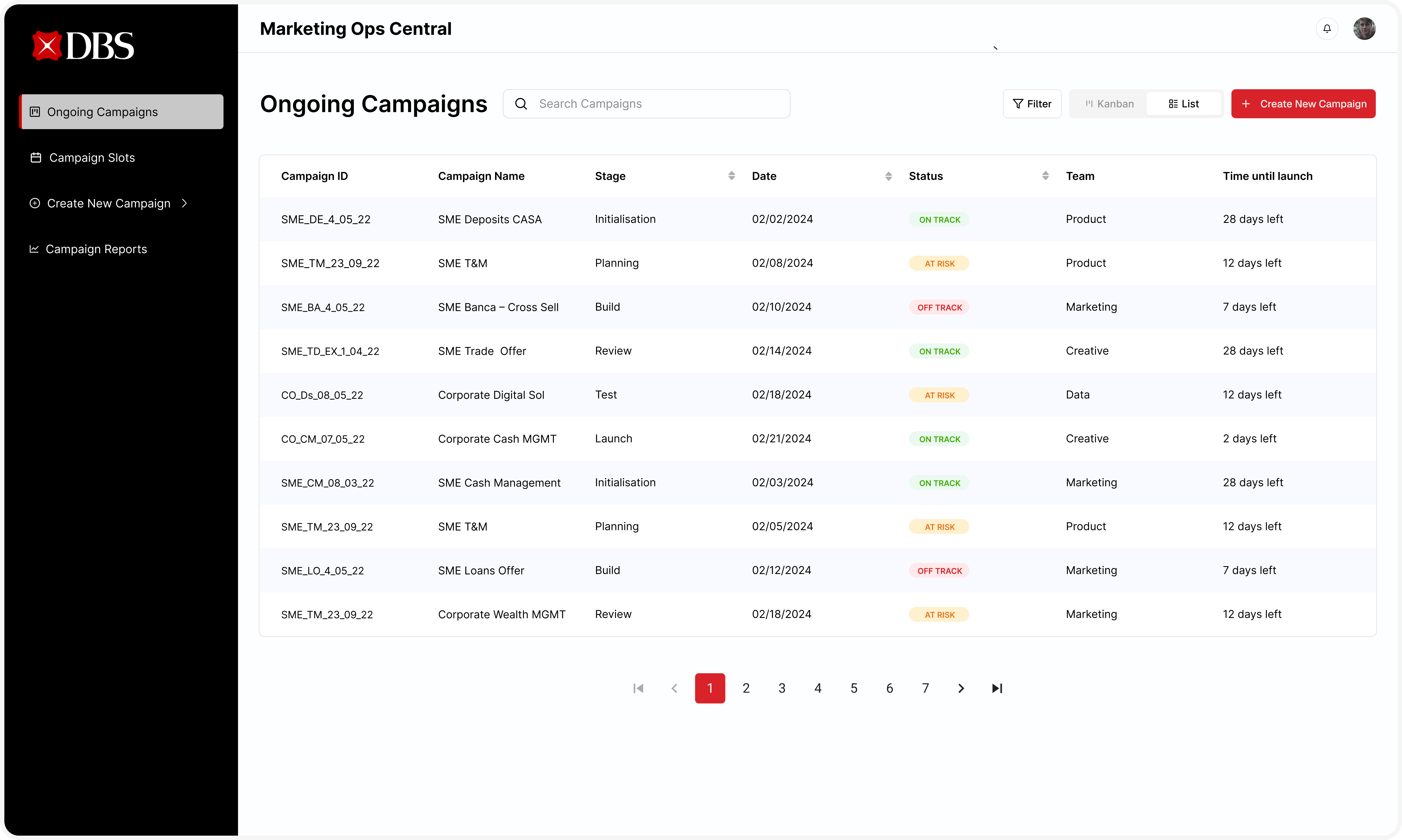
One thing we kept hearing during interviews was how easy it was to miss your step in the campaign process. Someone would submit a brief, but the next team wouldn’t know it was ready. A creative review would sit untouched because no one realized it was pending. notification system that keeps you gently in the loop. It sends you a nudge when something you’re responsible for moves forward, or when an update is relevant to a campaign you’re part of
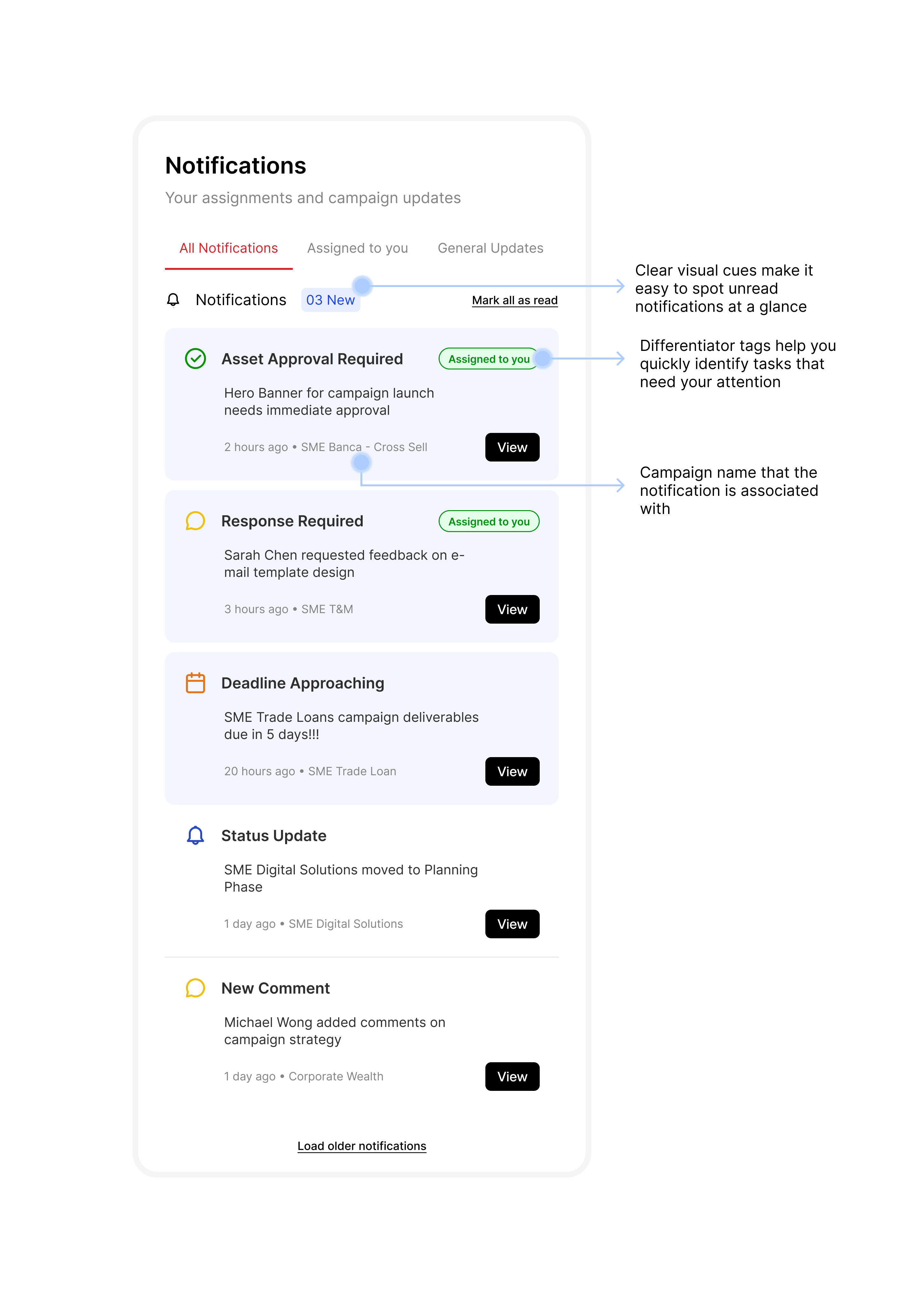
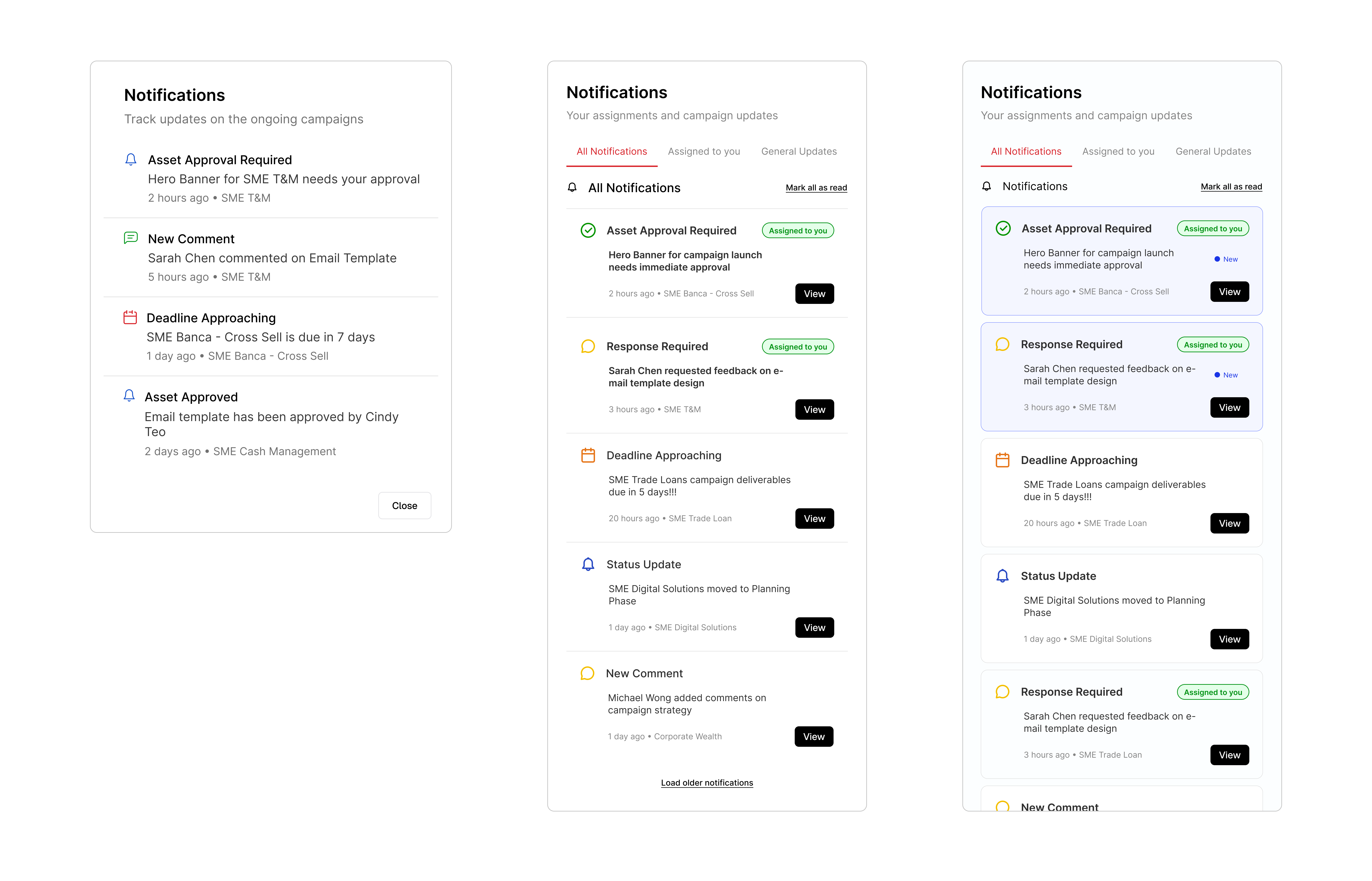
Designing the campaign management platform at DBS wasn’t just a product challenge—it was a lesson in navigating complexity, aligning people, and designing for trust.